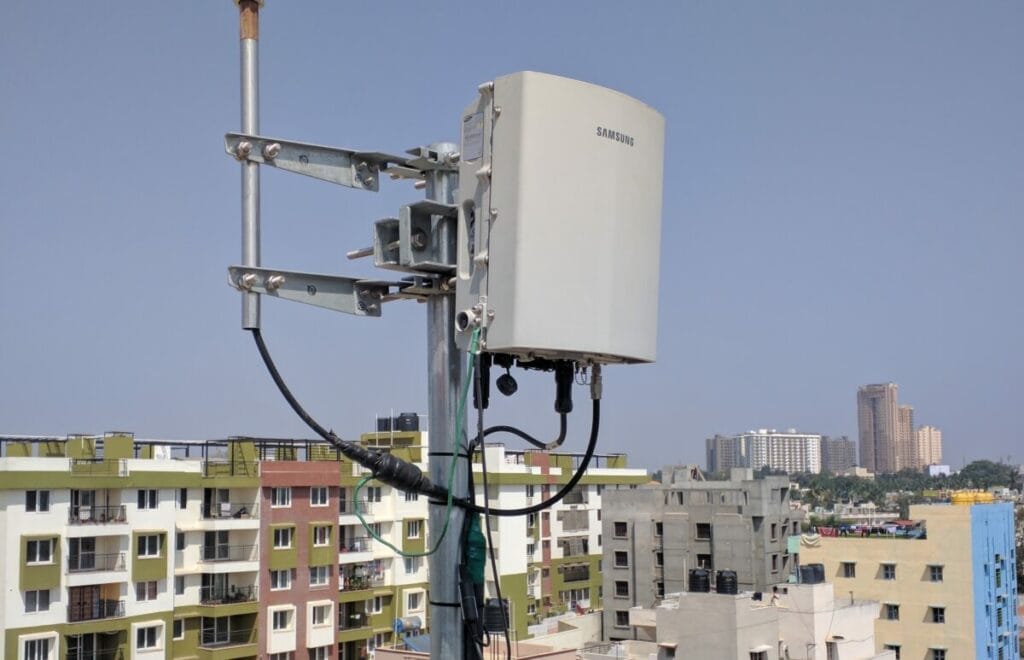The FCC’s Approach to Small Cells Strips Municipalities of Rights, Claim NATOA Panelists
June 29, 2020 — Wireless infrastructure deployment, particularly for small cell or distributed antenna systems, promise smart city innovation abilities. But this rollout is likely to be stymied until resolution of disputes between industry and municipalities. Local officials are upset that federal i
Jericho Casper

June 29, 2020 — Wireless infrastructure deployment, particularly for small cell or distributed antenna systems, promise smart city innovation abilities. But this rollout is likely to be stymied until resolution of disputes between industry and municipalities.
Local officials are upset that federal intervention – by Congress and by the Federal Communications Commission – is hampering their ability to govern their own rights-of-way.
Panelists of a webinar hosted by the National Association of Telecommunications Officers and Advisors on Monday argued that local governments must take proactive steps to maintain their influence in negotiations with industry over small cell deployment.
Although the FCC would prefer to ignore them, municipalities do have rights concerning the deployment of wireless infrastructure facilities. In particular, the Telecommunications Act of 1996, which preserves local zoning authority over the “placement, construction, and modification of wireless facilities.”
“While current policy gives local governments rights, there are limitations to these rights,” said Michael Roberts, an attorney with the Cohen Law Group.
Localities feel they are being squeezed by federal preemption from Washington
Localities rights were severely restricted in 2018, when the Federal Communications Commission adopted a ruling defining small cells and placing a number of restrictions on how state and local governments can manage the deployment of small cells.
The 2018 order built upon prior rules, and which also raised serious concerns from local governments.
In particular, the most recent order has been critiqued by municipalities as a blatant effort by the agency to strengthen the hand of carriers in negotiations with local governments over small cell deployment.
It was further labeled an attempt to limit the ability of local government to negotiate in the public interest around small cells.
Many local governments and national municipal associations, including NATOA, responded by appealing the order, denouncing its preemption of local power.
The FCC justified the order by stating that it was intended to remove regulatory hurdles impeding the implementation of 5G systems.
Limitations established by the order constrain municipalities’ vis-à-vis wireless infrastructure companies
Among a number of things, the order establishes a working definition for small wireless facilities, or small cells.
Robust DAS and small cell networks require at least one small cell to be deployed every few meters, and the order preempts local governments from establishing certain aesthetic requirements.
It rules all aesthetic requirements for small wireless facilities must be reasonable, no more burdensome than those applied to other types of infrastructure deployments and published in advance.
Roberts advised panelists about the importance of utilizing clear language when writing aesthetic requirements, as providers may be able to use vague language to avoid unclear aesthetic requirements.
The order further defines the size of small cells, stating all antenna equipment can be no more than a cumulative 28 cubic feet in volume.
“That could be up to the size of a refrigerator,” Roberts warned. While the cells are termed “small,” that often is not the case.
The wireless industry often refers to small cells as the size of “pizza box,” but Roberts’ point about 28 cubic feet shows that federal rules allow for the size of a refrigerator that presumably could hold many, many pizza boxes.
The order also puts limitations on the fees that local governments can charge, which Roberts regarded as the biggest impact that it will have on local governments.
The order finds that fees localities charge operators must, again, be “reasonable”.
“Local governments may exceed these approximate cost ceilings by conducting a defensible cost study,” said Tripp May, shareholder at Telecom Law Firm.
Further, the agency’s order creates new shot clocks to control the length of the review process for applications for small wireless facilities.
Shot clocks govern how quickly localities have to review industry applications for installing small cell sites, as all approvals, permits, and agreements must be completed within shot clock time frames.
The industry is lobbying for more legislation that would allow them to immediately begin small cell construction if a locality does not review their application before the shot clock expires, panelists said.
Takeaway messages for municipalities and for the wireless infrastructure industry
As to the FCC’s order, however, petitions filed against it allege that it exceeded the agency’s authority, arguing it largely preempts local governments from regulating their small cell equipment.
Oral arguments in opposition of the order were held on February 20, but the court’s decision has yet to be announced.
“There is a great deal of control at the local level,” Roberts said. “Impose regulations and understand the rights and abilities of your community.”









Member discussion